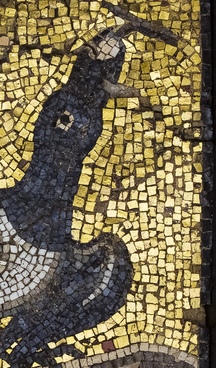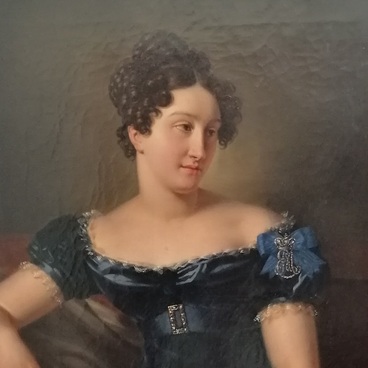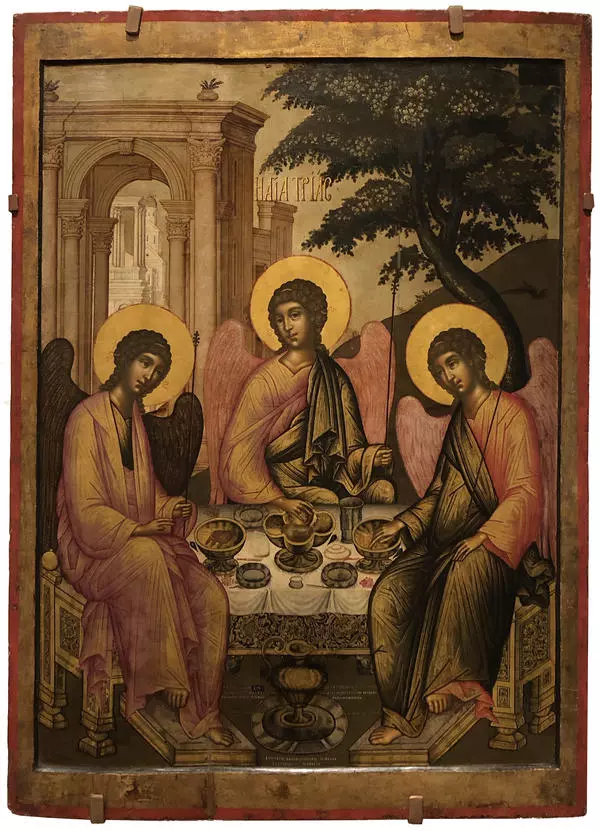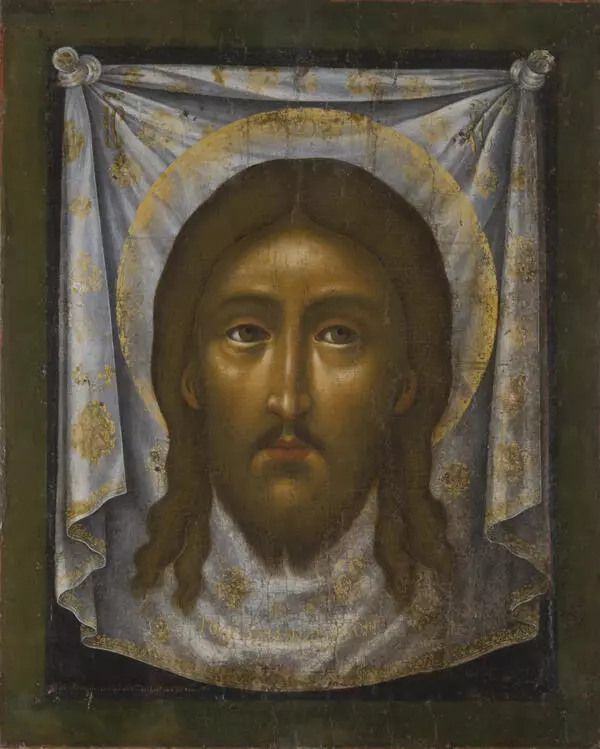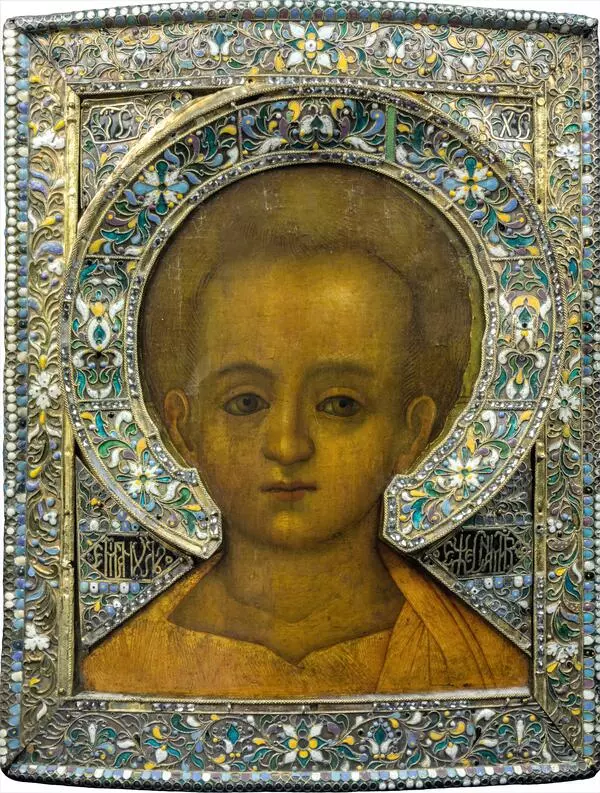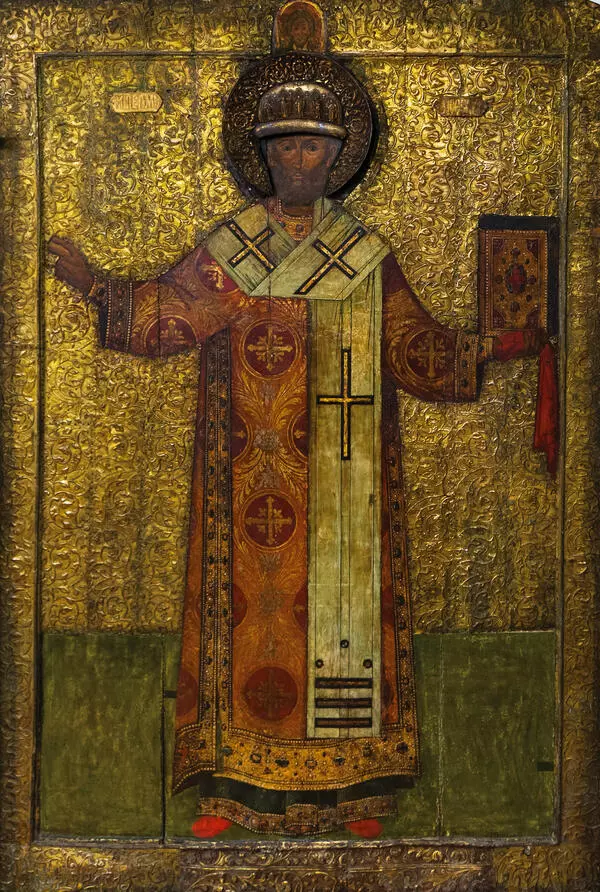Saint blessed prince Vladimir, reverend Arkady Novotorzhsky, and Moisey Ugrin are depicted in the icon. These saints are strongly connected with the foundation of Boris and Gleb Novotorzhsky Monastery.
As it follows from the hagiography, the monastery was founded in 1038 by the boyar Yefrem. Yefrem was an ex-equerry to Prince Vladimir Svyatoslavich’s. His brothers Georgy and Moisey served to Prince Boris. After the assassination of Vladimir’s sons Boris and Gleb, Yenfem decided to abandon the worldly life. His brother Georgy was also murdered protecting Boris, while Moisey, having got over his travels and Polish capture, became the monk of Kyivo-Pecherska Lavra and got a nickname Ugrin.
In 1038 Yefrem built a temple on the Tvertsa River along with his associate protégé Arkady Novotorzhsky, and named it in the memory of the assassinated Boris and Gleb.
The icon was painted by two craftsmen of the 17th century, Simon Ushakov and his student Georgy Zinoviev. Simon Ushakov was a leading master of the Armory Chamber, which at the time was regarded as the country’s art centre. The whole school of Moscow icon painters headed by Simon Ushakov was founded there.
Georgy Zinoviev was one of his students. Along with Ushakov they created an iconostasis for the church of Gregory of Neocaesarea in Derbitsy, and painted a number of icons for the festival tier of the iconostasis in Pokrovskaya church in Hitrovo. Ushakov highly estimated his student’s talent and spoke of him as the one who ‘paints skillfully, and has imagination for depicting the icons of saints’.
Simon Ushakov put a lot of innovations into the painting and icon traditions. The first czar’s and his associates’ portraits (parsunas) were painted on his watch. In icon painting he consciously got away from the confirmed generalized portraits of saints giving the figures more volume and life-likeness. For that he developed the whole system of techniques in terms of working with composition, color and texture.
As it follows from the hagiography, the monastery was founded in 1038 by the boyar Yefrem. Yefrem was an ex-equerry to Prince Vladimir Svyatoslavich’s. His brothers Georgy and Moisey served to Prince Boris. After the assassination of Vladimir’s sons Boris and Gleb, Yenfem decided to abandon the worldly life. His brother Georgy was also murdered protecting Boris, while Moisey, having got over his travels and Polish capture, became the monk of Kyivo-Pecherska Lavra and got a nickname Ugrin.
In 1038 Yefrem built a temple on the Tvertsa River along with his associate protégé Arkady Novotorzhsky, and named it in the memory of the assassinated Boris and Gleb.
The icon was painted by two craftsmen of the 17th century, Simon Ushakov and his student Georgy Zinoviev. Simon Ushakov was a leading master of the Armory Chamber, which at the time was regarded as the country’s art centre. The whole school of Moscow icon painters headed by Simon Ushakov was founded there.
Georgy Zinoviev was one of his students. Along with Ushakov they created an iconostasis for the church of Gregory of Neocaesarea in Derbitsy, and painted a number of icons for the festival tier of the iconostasis in Pokrovskaya church in Hitrovo. Ushakov highly estimated his student’s talent and spoke of him as the one who ‘paints skillfully, and has imagination for depicting the icons of saints’.
Simon Ushakov put a lot of innovations into the painting and icon traditions. The first czar’s and his associates’ portraits (parsunas) were painted on his watch. In icon painting he consciously got away from the confirmed generalized portraits of saints giving the figures more volume and life-likeness. For that he developed the whole system of techniques in terms of working with composition, color and texture.
In the featured scene one can easily see the new focus on the saints’ depiction. Prince Vladimir’s clothes are decorated with the floral ornament, the goldwork on caftan is carefully depicted. The influence of the Western painting can be noticed in the images of the reverend Moisey and Arkady, they are more personalized.
Simon Ushakov completed a lot of works for cathedrals and monasteries, czar’s court, and private commissioners. The featured icon was given to the Boris and Gleb Novotorzhsky Monastery by Dionysius, the prior of the Moscow Sretensky monastery, and later on it was transferred to the Tver Museum by archimandrite Antonius in 1878.
Simon Ushakov completed a lot of works for cathedrals and monasteries, czar’s court, and private commissioners. The featured icon was given to the Boris and Gleb Novotorzhsky Monastery by Dionysius, the prior of the Moscow Sretensky monastery, and later on it was transferred to the Tver Museum by archimandrite Antonius in 1878.


